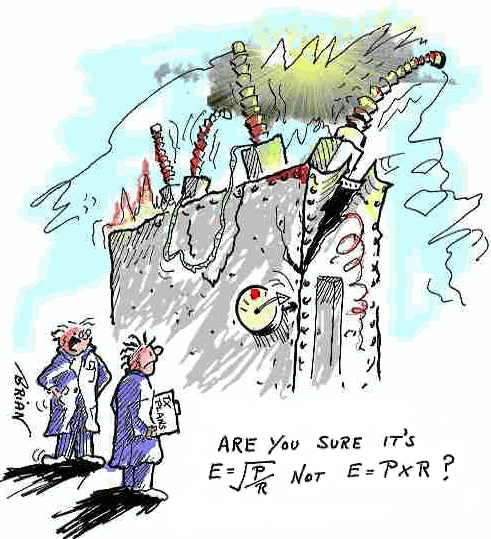
from Greenie Watch
ELECTRIC POWER CAPACITY
An email from Bryan Leyland [bryanleyland@mac.com]:
In case it is useful, here is some basic information on power systems and renewable energy technologies.
Most power systems have a capacity factor of between 50% and 70%. (Capacity factor is the ratio of the average load to the peak demand in MW.) In some countries the peak demand occurs in winter evenings (heating loads) and other countries in the middle of summer (air-conditioning loads).
There are basically three types of generating plant. a) Base load that operates ~90% of the time generating efficient low-cost electricity. Coal and nuclear plants are prime examples. b) Mid-range plants that are often shut down in the early hours of morning and generate maximum power during the day and during peak demand periods. Hydropower and gas-fired stations, are examples. c) Peak load stations that operate for between 1% and 20% of the time during peak demand periods. Open cycle gas turbines, hydropower stations and pumped storage hydropower are common examples. All these plants can be relied upon to operate when needed - unless they break down or fail to start which occurs about 2% of the time.
Power systems also have a need for "frequency keeping" because the amount of electricity generated must always match the demand exactly. So if there is a sudden large change in load -- the beginning and end of a popular TV programme is a classic example -- generating plant must be available that can increase its output very rapidly -- or decrease its output - very rapidly.
If there is a sudden loss of a large amount of generating capacity then it is sometimes necessary to shed some of the load to avoid a system collapse. Frequency keeping stations are designed to cope with these fluctuations.
The much touted new renewable energy technologies add to the problems of operating a power system because they are unpredictable and their output changes rapidly. In the case of wind power, a change in the output of 50% in a few minutes is not all that unusual. Attempts to predict the output of wind farms more than an hour or so ahead have not been successful. Capacity factors vary from 18% to 37%. Wind power costs about US$2200 per KW. This transfers to a cost of 8 -10c /kWh.

In the case of solar power, the capacity factor is around 20%. The output varies predictably every day and unpredictably every time a cloud passes over the sun. A cloud can drop the output by as much as 60%. The capital cost is in excess of $5000 per KW. The unit cost in around 40 cents. Various forms of marine power are also expensive, more or less unpredictable and have high capital costs. Operation and maintenance costs are unknown but likely to be very high. Reliability is likely to be low. The much touted Pelamis wave power generator project off the coast of Portugal has been abandoned because of financing and technical problems.
None of these renewable energy technologies would exist without grants and massive subsidies.
I had just done a theoretical study based on a notional power system supplied by nuclear power supplemented by pumped storage or by wind power also supplemented by part storage. The system has a load of 10,000 MW at a capacity factor of 60%. The nuclear power option as an installed capacity of about 12,000 MW and the cost of generation is about 8 cents per unit.
Assuming a wind power capacity factor of 25%, the alternative system needs 52,000 MW of installed capacity and the total cost of power is about 25 cents. These figures appear to be incredible but, as far as I can see, they are realistic.
The energy generated from wind has to be sufficient to meet the load and, in addition, to meet the 25% losses from the pumped storage. This requires 32,000 MW of wind power. As the system load is no more than 10,000 MW, something like 20,000 MW of pumped storage capacity is needed to absorb the surplus wind energy when the wind is blowing and store it until it is needed. So we finish up with 52,000 MW of capacity to supply 10,000 MW of load. Hence the electricity is very expensive.

All the promoters of renewable energy ignore the need for storage. What is needed is a large scale, efficient low-cost technology that can store huge amounts of electrical energy for weeks or months. No suitable technology exists or has even been contemplated. Hydro pumped storage is the best we have. It is expensive -- at least $1500 /kW -- and requires two very large storage lakes not far from each other end with one lake something like 700 m higher than the other. The losses are 25%. The cost, the losses, and the difficulty of finding a suitable site are insuperable barriers to the large scale adoption.
So people who tell us that it is possible to run modern power systems almost entirely from wind power, and solar and marine energy are not telling the truth.
No comments:
Post a Comment